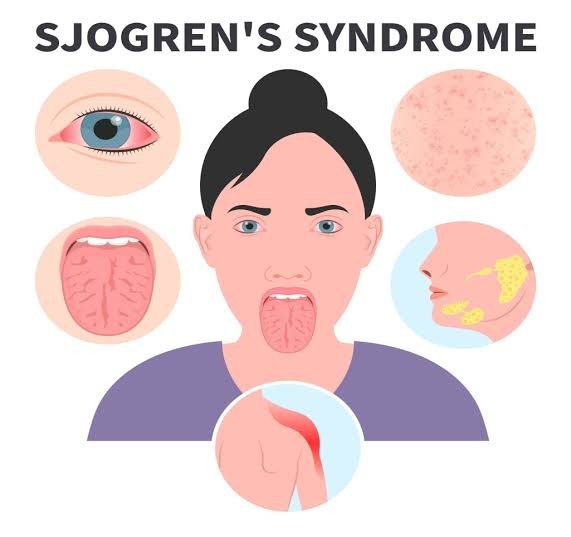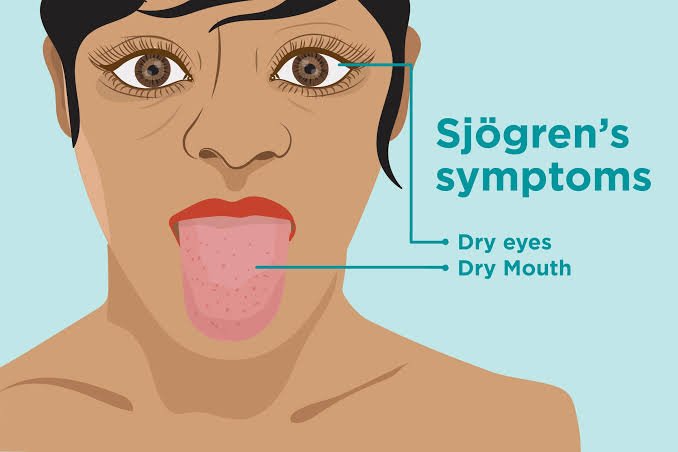It is a chronic autoimmune disorder where the body’s immune system mistakenly attacks its own moisture-producing glands, leading to dryness in the mouth and eyes. It can also affect other parts of the body, such as joints, skin, and organs like the kidneys and lungs. Here’s a detailed breakdown for your blog:

- Causes: The exact cause of Sjögren’s syndrome is unknown, but it’s believed to involve a combination of genetic, environmental, and hormonal factors. Certain genes may predispose individuals to develop the condition, while environmental triggers like viral infections could also play a role.
- Symptoms: The hallmark symptoms of Sjögren’s syndrome are dry mouth (xerostomia) and dry eyes (keratoconjunctivitis sicca). Other symptoms may include fatigue, joint pain, dry skin, recurrent vaginal dryness, and difficulty swallowing.
- Diagnosis: Diagnosing Sjögren’s syndrome can be challenging because its symptoms overlap with other conditions. It often involves a combination of medical history, physical examination, blood tests to check for specific antibodies (such as anti-SSA and anti-SSB), and imaging tests like salivary gland scintigraphy or lip biopsy.
- Classification: Sjögren’s syndrome can be classified into two types: primary and secondary. Primary Sjögren’s syndrome occurs alone, while secondary Sjögren’s syndrome occurs in conjunction with another autoimmune disease, most commonly rheumatoid arthritis or systemic lupus erythematosus (SLE).
- Complications: Left untreated or poorly managed, Sjögren’s syndrome can lead to various complications. These may include dental cavities and gum disease due to reduced saliva production, corneal damage and vision problems from dry eyes, joint inflammation and damage, and an increased risk of lymphoma.
- Treatment: Treatment for Sjögren’s syndrome focuses on relieving symptoms and preventing complications. This may involve the use of artificial tears and saliva substitutes to alleviate dryness, medications such as nonsteroidal anti-inflammatory drugs (NSAIDs) or immunosuppressants to manage inflammation, and lifestyle modifications like staying hydrated and avoiding dry environments.
- Management: In addition to medical treatment, lifestyle modifications can help manage Sjögren’s syndrome symptoms. This may include using humidifiers to add moisture to the air, practicing good oral hygiene, avoiding smoking and alcohol, and wearing sunglasses to protect the eyes from irritation.
- Research and Future Directions: Ongoing research into the underlying mechanisms of Sjögren’s syndrome aims to develop more targeted treatments and improve patient outcomes. This includes exploring new medications, such as biologic therapies targeting specific components of the immune system, as well as investigating the potential role of stem cell therapy and gene therapy.
By providing comprehensive information on Sjögren’s syndrome, your blog can serve as a valuable resource for individuals affected by the condition, as well as their caregivers and healthcare providers.




